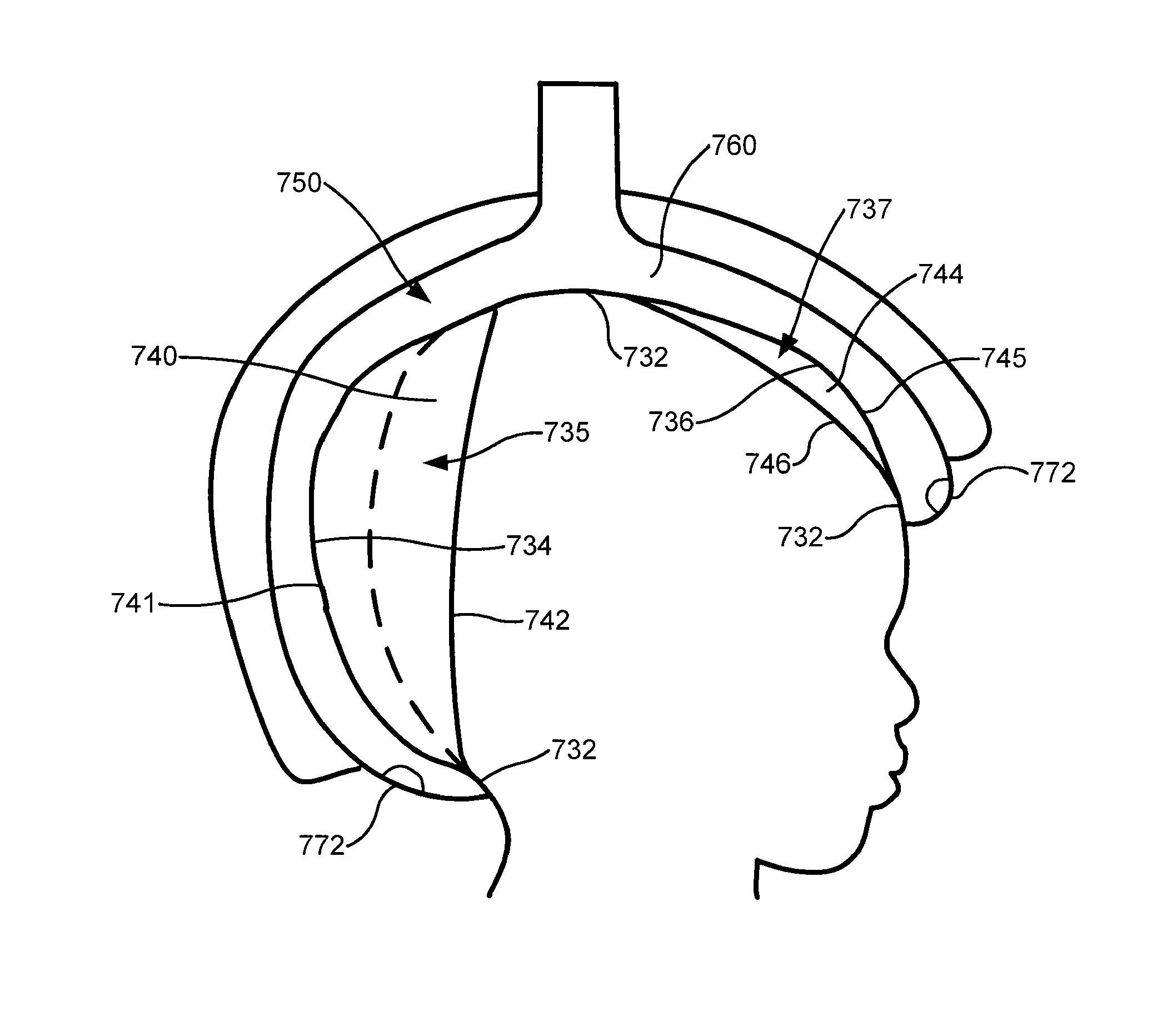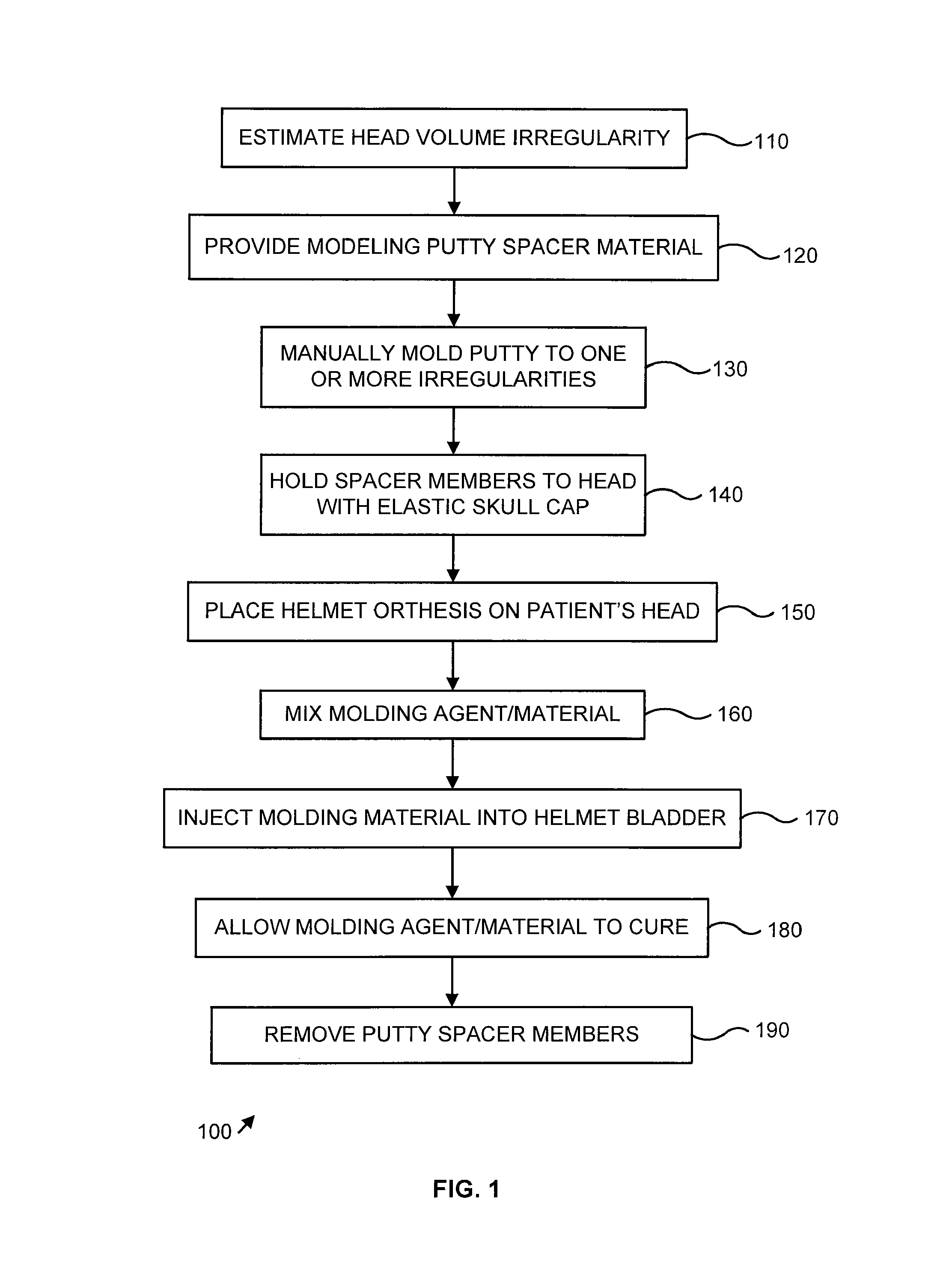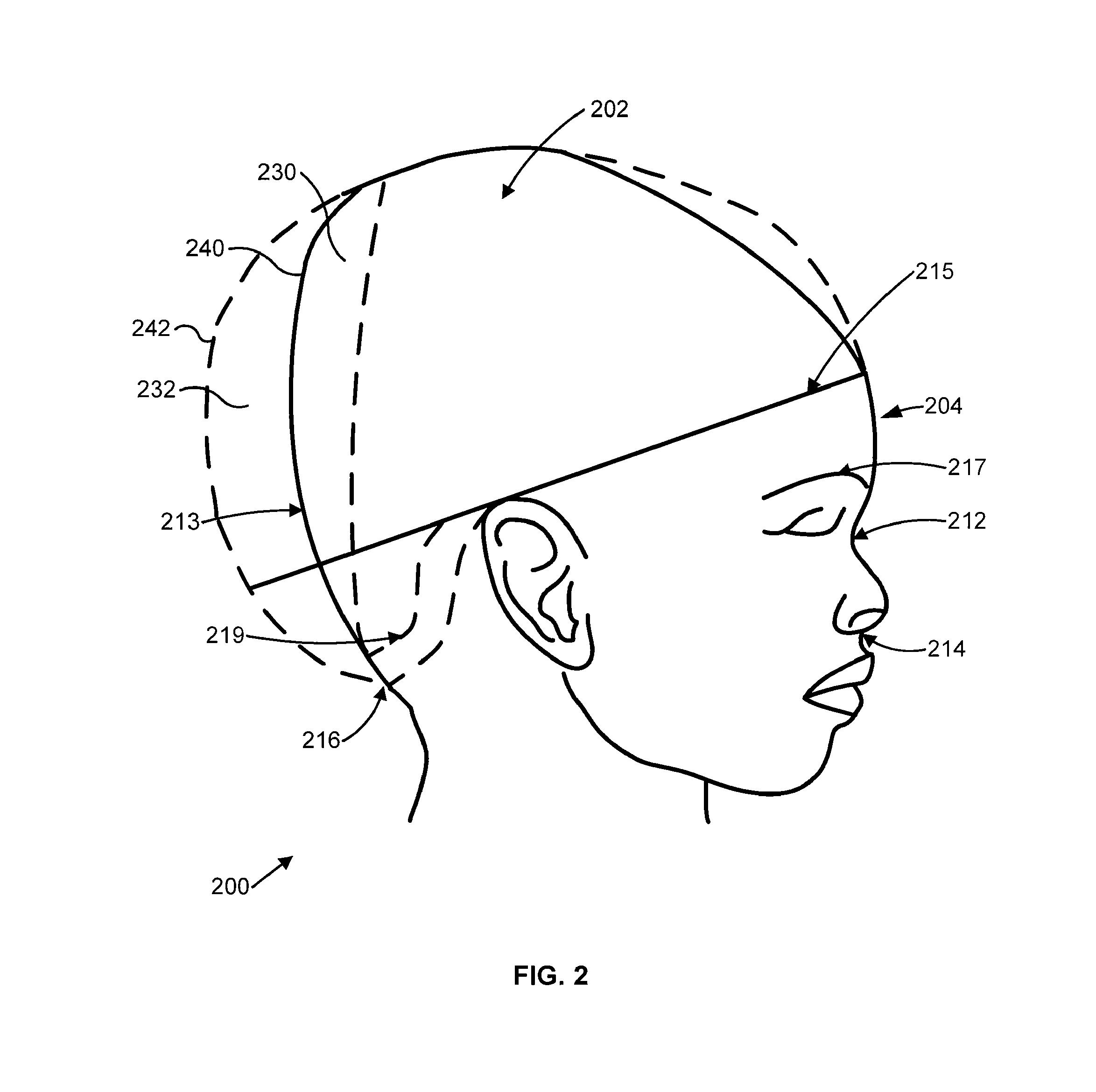In situ molded orthotic and method for its fabrication
a technology of orthotics and in situ molding, applied in the field of orthotics, can solve the problems of poor parental acceptance, hampered method, similar cranial shape alterations, etc., and achieve the effects of reducing the cost and complexity of the system, facilitating the delivery of custom orthotics, and facilitating the delivery of custom fabricated orthotics
- Summary
- Abstract
- Description
- Claims
- Application Information
AI Technical Summary
Benefits of technology
Problems solved by technology
Method used
Image
Examples
Embodiment Construction
[0050]With reference now to the drawings where the showings are for purposes of illustrating the example embodiments only, and not for purposes of limiting same, the Figures show embodiments of a molded orthotic, methods of fabricating a molded orthotic, and methods of treatment using a molded orthotic. With reference first to FIG. 1 a method 100 of fabricating a molded orthotic in accordance with an embodiment is illustrated. In an initial step 110, a patient's head volume is estimated for use in determining and locating one or more head volume irregularities. The estimations may be performed visually, using mechanical methods such as volume displacement “bed of nails,” by 3d scanning or equivalent technology, or by using any other form of volume estimation that may be convenient or desired. In a first preferred embodiment, selected steps of the method 100 are performed visually where applicable and, in another embodiment, the patient's head is scanned using a 3-dimensional camera ...
PUM
 Login to View More
Login to View More Abstract
Description
Claims
Application Information
 Login to View More
Login to View More - R&D
- Intellectual Property
- Life Sciences
- Materials
- Tech Scout
- Unparalleled Data Quality
- Higher Quality Content
- 60% Fewer Hallucinations
Browse by: Latest US Patents, China's latest patents, Technical Efficacy Thesaurus, Application Domain, Technology Topic, Popular Technical Reports.
© 2025 PatSnap. All rights reserved.Legal|Privacy policy|Modern Slavery Act Transparency Statement|Sitemap|About US| Contact US: help@patsnap.com



